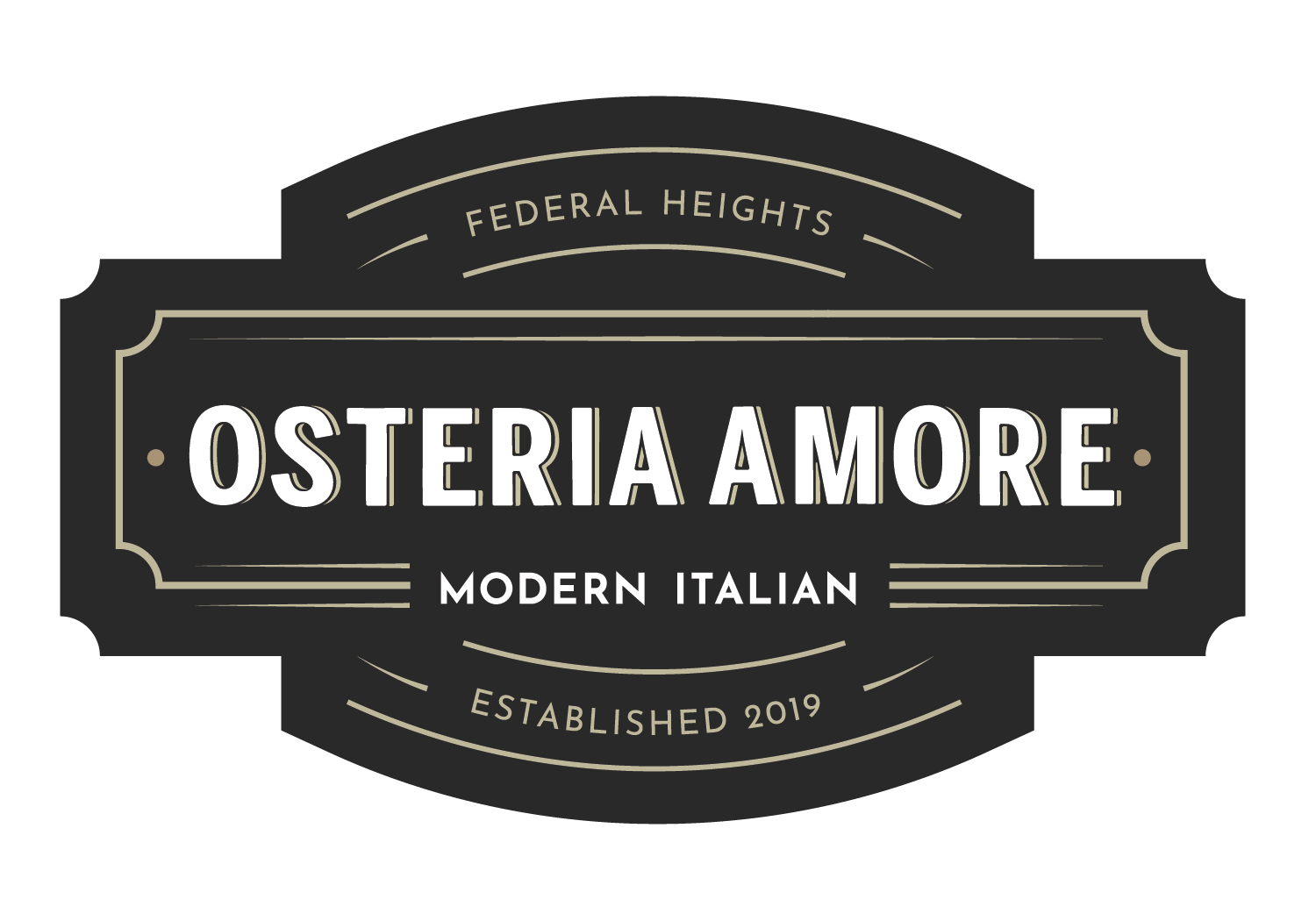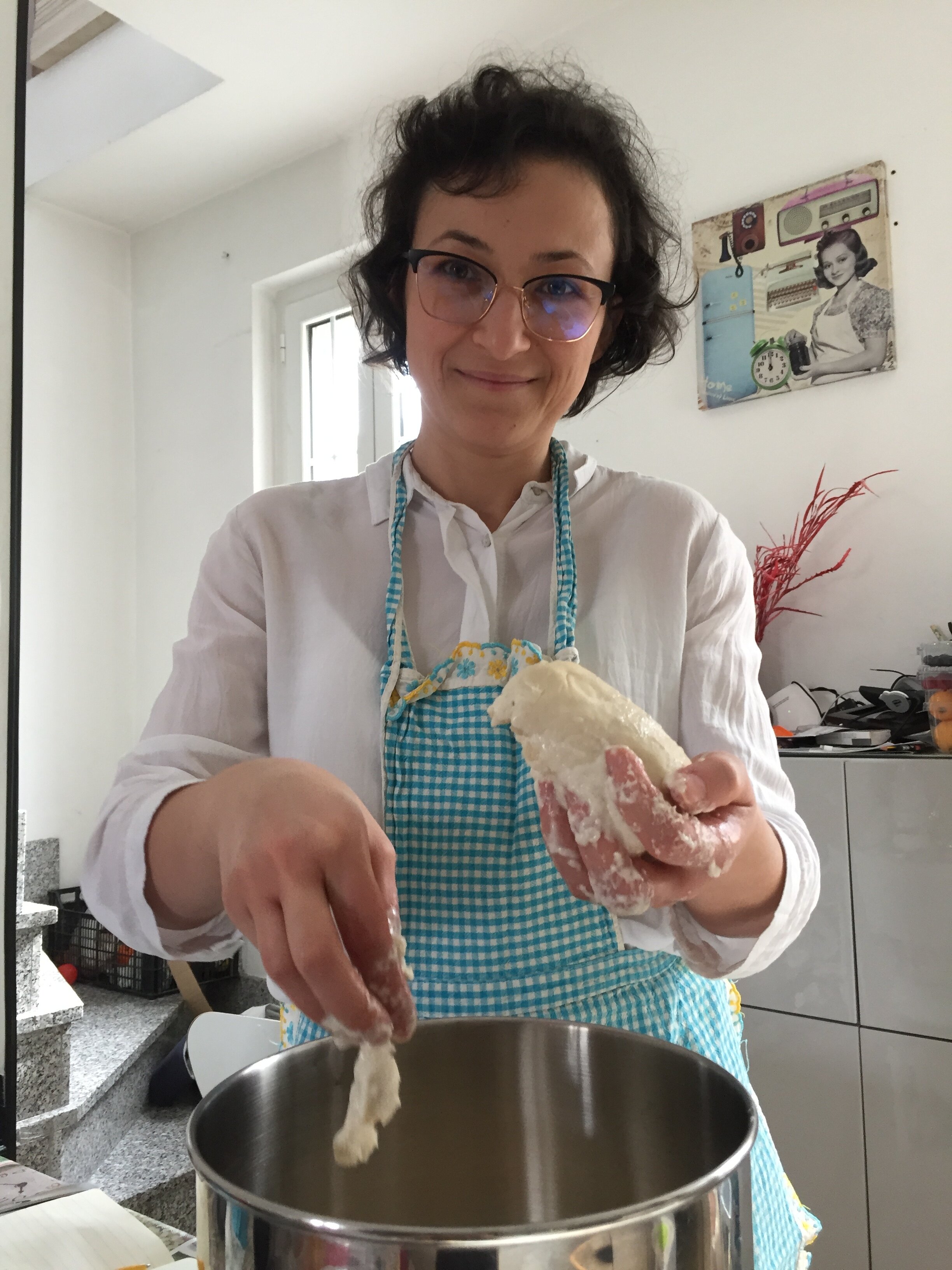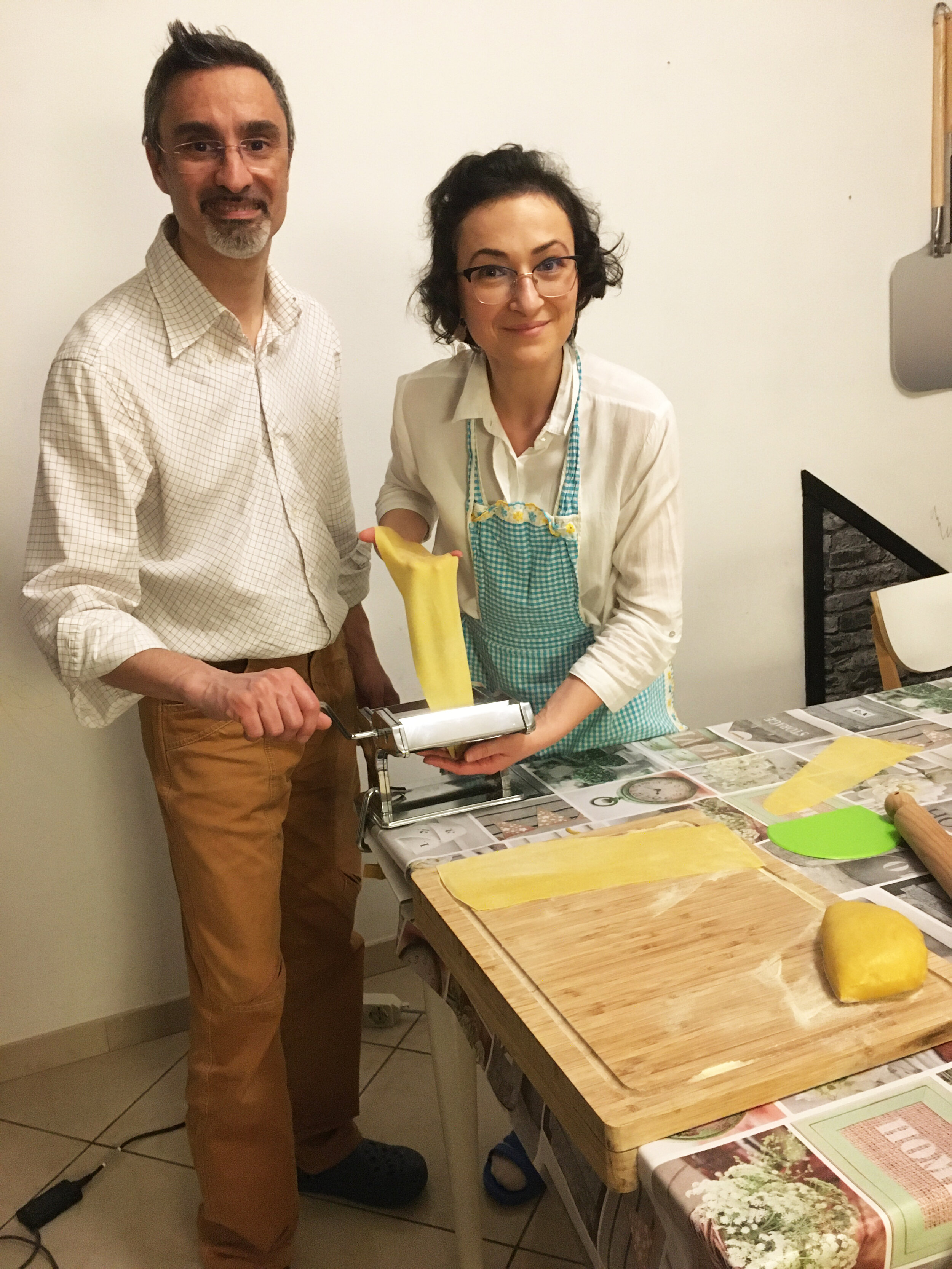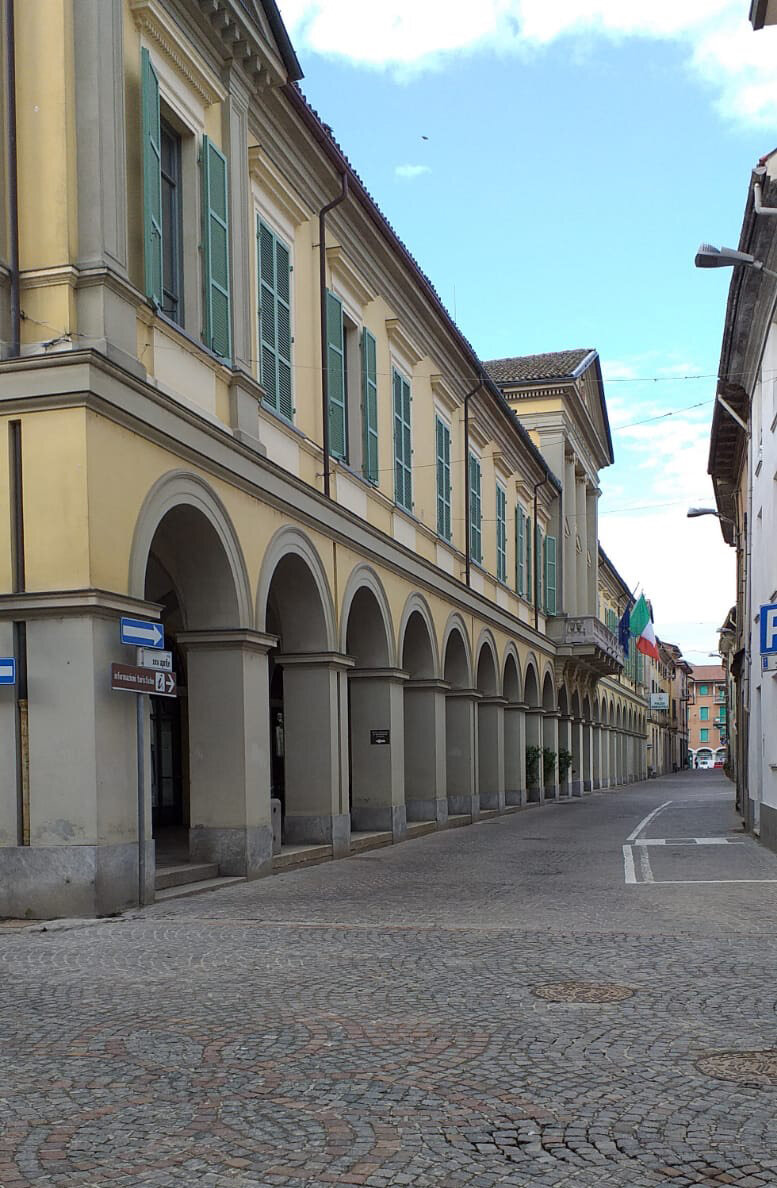Hashtag Stay in The Kitchen: How Cooking Helps Me Counter Lockdown Effects
Teodora Ema Pirciu is writer and journalist living with her husband Roberto, in the small village of Castellazzo Bormida, halfway between Turin and Milan, in the province of Alessandria. The town has been in lockdown since March 14. Today Teodora shares what life has been like during lockdown, scenes from her village and kitchen, and how cooking remains a constant, providing both physical and emotional nourishment.
Empty streets of Piazza Castellazzo. Photo by Lucia Scarpa.
I work from the kitchen table. I could set a small office in the living room upstairs or make myself comfortable in the bedroom, but I prefer the warmth of my kitchen. The light simply falls in the right spot, and I sit in a place where my kids can find me if they need anything.
For me, the kitchen has become a safe place. The pandemic that has changed everything outside has no power here, in the kingdom guarded by the oven where pizza comes from, the cabinet where I hide the chocolate eggs, and the coffee machine. Something as simple as some pots, wooden spoons, and plates can create a feeling of normality that doesn’t exist outside. Here, the only thing that’s changed is that we cook more than we did two months ago.
Teodora in her kitchen in Castellazzo Bormida. Cooking helps Teodora remain connected to her community during lockdown.
Teodora and her husband, Roberto, make handmade pasta from home during lockdown in Italy.
Food Helps Us Cope with Restrictions
Images with Italians singing from their balconies have circled the world to fill our hearts with hope. But that’s not all that we do in lockdown. As several newspapers report, Italians cook.
We’re compelled to remain indoors all day. Even if we work, there’s still a lot of free time, and many of us spend it inside the kitchen. Sure, we do a lot of other things (we have Netflix, too), but mostly we cook. Bread, pizza, doughnuts, tarts, and cakes, besides everyday breakfast, lunch, and dinner.
Ever since we’re in forced lockdown, my family has never ordered takeaway. In part, because we don’t have any decent restaurant making deliveries in our small village, in part because we love cooking. And we’re not the only ones.
According to the Italian newspaper Corriere della Sera, #food and #foodporn are the most used hashtags in Italy after the ones related to the virus and isolation. My Instagram and Facebook newsfeed abound of photos of mouth-watering food, from traditional dishes to innovative experiments. People dedicate hours to preparing food for which they wouldn’t have time on a typical pre-pandemic day--such as bread, pizza, or home-made pasta.
Even before the COVID-19, Italians used to spend an average of three hours a day in the kitchen. Because “la cucina è il cuore della casa”-- the kitchen is the heart of the house. Here, we relax, have fun, and find pleasure while cooking. And now, more than ever, we come back to our pots and recipes to make magic and bring a smile on everyone’s face.
What better way to wipe the tears from a toddler’s eyes behind a locked door than a warm, sticky brownie? From comfort food to fancy recipes seen during cooking shows, cooking has been my way to keep my sanity and remain optimistic for the last five or six weeks. The truth is, I can’t even remember how long it’s been since I left the house. I try to turn my frustrations and tears into something good and tasty. As with many friends and neighbors, I find consolation in cooking.
How Italians Find Ingredients During A Pandemic
The weekly local market in our village was last organized on March 14th with less than a third of the regular sellers, in an attempt to support social distancing. After that Saturday, we had to switch from the local market to supermarkets and local grocery stores.
Everyone goes the extra mile to provide people with food and other essential products. Supermarket employees and business owners even do home delivery for those who cannot leave their homes for various reasons. But their offer is pretty limited, so we had to reinvent supply chains to maintain normality inside our kitchens. In many supermarkets, the shelves dedicated to bakery products are empty. Last time my husband went to the local store, he saw two packages of flour (about four pounds of flour) on the shelf. The week before, he couldn’t see any flour at all. Suppliers struggle to produce yeast, as well. Another sign that the number of people who make bread and pizza at home has grown significantly since the pandemic.
Luckily for us, we don’t rely on the local store for our bakery ingredients. As we used to make our bread even before the crisis and work with natural mother yeast, we opt for different suppliers, so we had the flour delivered a few weeks ago. Most of us have our favorite products delivered by our regular suppliers. We’re lucky to live in a village surrounded by cultivated fields and small farms. Neighbors who work at these farms bring us fresh products once or twice a week.
Local farms deliver fresh produce to Teodora’s and her neighbors during lockdown.
The butcher and the family business who sells cheese are still allowed to keep their activities open, so we have all the fresh ingredients necessary to prepare delicious meals. It was pretty helpful, especially when we celebrated Easter, and we didn’t have to omit any traditional dish.
For the products that we used to buy in the town nearby, we rely on my husband’s colleagues who live there and travel for work. Of course, we could take everything from the local supermarket. However, for now, we try to keep things as normal as possible, and, to a certain extent, that includes cooking with the ingredients that we love.
Torta Pasqualina - an Easter tart with spinach, ricotta, and home-made puff dough.
Tagliatelle con Zucchine e Ceci - Tagliatelle (home-made pasta) with zucchini and chickpea.
Pane di Pasqua Dolce - Sweet Easter Bread, a recipe that I like because it puts together two cultures. The colored eggs are also a Romanian tradition, but the habit of baking eggs in bread is Italian.
This way, I could bake a cake for my child’s birthday, which we were forced to celebrate in isolation. Thanks to my community, I could prepare a traditional Easter lunch, and I can continue to surprise my kids with home-made treats whenever they feel sad.
At the same time, it’s an opportunity to reflect on what we eat and how food influences our well being. Now, we finally have the time to get our ingredients right from the people who produce them. As we go back to local suppliers, we learn to rebuild the relationships with our community to nurture not only our bodies but also our spirits.
A Country of Bakers
As an expat, I discovered that, in the heart of every Italian, laid a magician. They all seem to have excellent native cooking skills and master them faster than the rest of us. They take flour, yeast, water, and a pinch of salt and turn them into golden, crunchy, home-made bread or fluffy pizza dough. Add one or two other ingredients, and you can obtain a variety of exquisite leavened products.
To me, nothing can compete with the smell of a product that is fresh out of the oven. It’s warm like a mother’s hug and makes you feel loved. A feeling that I crave every time I read the news or I count the days left of this lockdown. So, I stand up from the kitchen table and try to recreate that feeling as often as I can.
When I cook, I don’t feel alone anymore. Food brings us together even when we need to keep our distances. “Lontani, ma vicini” (distant, but close) is a message of hope meant to support people in a battle that they have to fight both as individuals and as a community. The passion for cooking unites us and makes us feel close to each other. Streets might be empty. But I know that somewhere inside the houses that I can see from my balcony, someone cooks with me, and, suddenly, I feel connected by invisible strings with an entire community.
The limitations on mobility have generated an increase of 80 percent in flour consumption, according to authorities. On social media, people participate in hundreds of thousands of conversations regarding yeast, baking techniques, and recipes coming from wise grandmothers and famous chefs. Professional bakers enact incredible cooking shows live on Facebook directly from their kitchens or share tutorials on YouTube to the delight of the Italian audience.
The luckiest of us get one-to-one training through video calls directly from their mothers and grandmothers. It’s a way to keep in touch with family members during a time when authorities tell us that the best way to show people our love is to remain apart as much as possible. In many ways, cooking keeps us together in the hardest of times. When you cook your grandma’s recipe, and she’s watching you from miles away, you feel her love and then get to share it with your partner and your kids.
As long as we can gather around the table and share a meal, we still have hope. We connect with friends for an “aperitivo” (Italian happy hour, but with snacks) and share stories about our days in isolation to feel connected. We also share cooking tips and tricks, we send each other photos of the food we make, and we commit to cooking the same recipe when we’ll meet again for dinner. We use simple ingredients to create memories. And that’s magic.
Empty streets of Castellazzo Bormida, a small village halfway between Turin and Milan. Photo by Lucia Scarpa.








